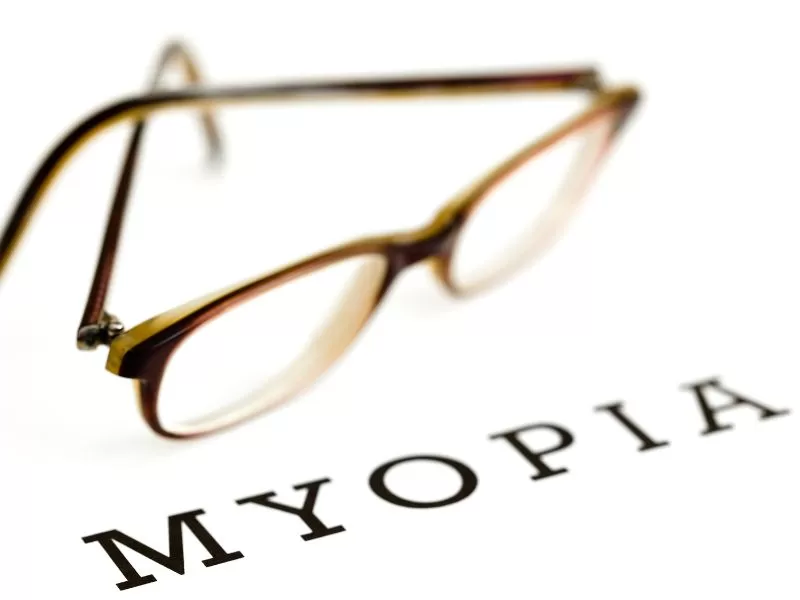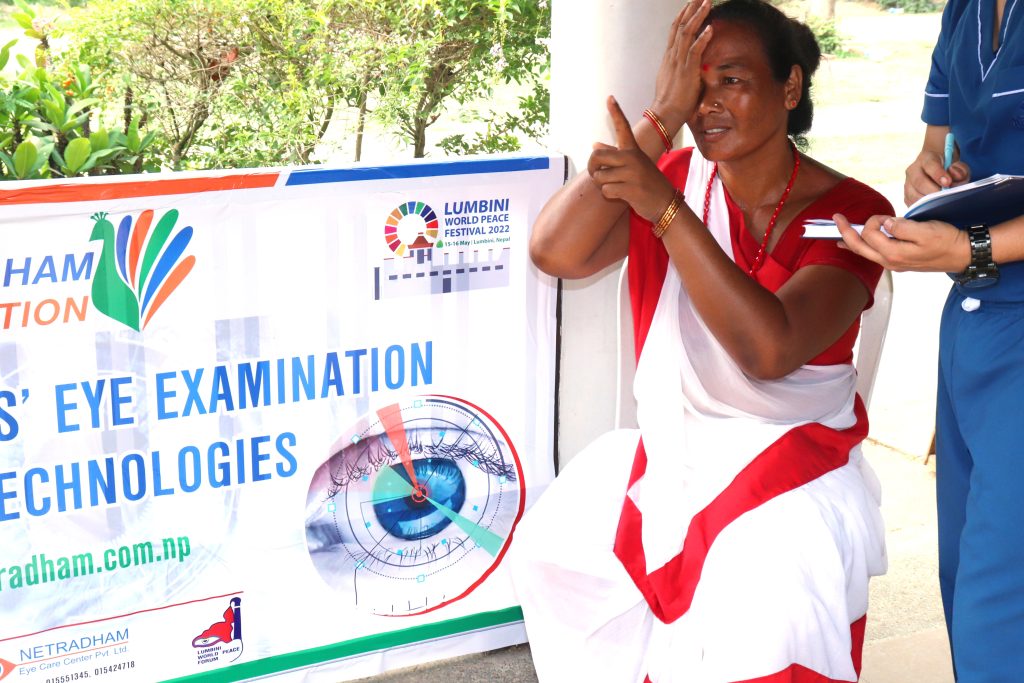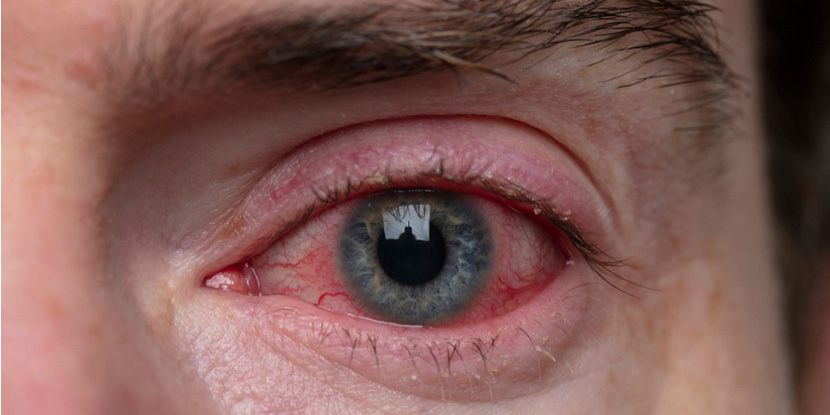 May 3, 2023
May 3, 2023
Common Eye Diseases in Nepal and Their Treatment Options
Introduction:
Various eye diseases that pose significant health challenges has been affecting major population of Nepal. These eye diseases can result in severe visual impairments and, in extreme cases, complete blindness. In this article, we will discuss the most common eye diseases in Nepal and their treatment options.
1. Cataracts:
Cataracts are the leading cause of blindness in Nepal, affecting over 70% of people over the age of 60. It is a condition where the lens of the eye becomes cloudy, leading to blurry vision, difficulty seeing in low light, and halos around lights.
Cause of cataracts:
– Aging – Injuries
– Congenital Cause – Use of Medications such as steroids
– Patients with Diabetes – Excessive exposure to sunlight
Cataract Surgery is an only option to get rid of Cataracts. If untreated timely, it can lead to other complications such as Glaucoma.
2. Glaucoma:
Glaucoma is another common eye disease in Nepal that affects the optic nerve, leading to vision loss and blindness. It is often referred to as the “silent thief of sight” because it progresses slowly and without symptoms until it’s too late.
Risk factors for glaucoma:
– Genetics – High Refractive error
– High ocular pressure – Long Standing Cataract
– Diabetes and Hypertension – Injuries
Treatment options includes;
i. Eye drops: are the first line of treatment and work by reducing the pressure inside the eye.
ii. Laser surgery: is done to reduce eye pressure, if eye drops shows no reduction.
iii. Surgical Approach: Trabeculectomy surgery is done in severe cases where other treatments fail.
3. Trachoma:
Trachoma is a bacterial infection that affects the eyes and can lead to blindness if left untreated. More common in rural areas with poor sanitation and hygiene, it is caused by the bacterium Chlamydia trachomatis and spreads through personal contact, contaminated objects, or flies.
Symptoms include:
– Redness
– Discharge
– Itching of the eyes
– Eyelid Swelling
– Blurring of Vision
– Light sensitivity
Treatment includes:
i. Antibiotics: are the primary treatment to kill the bacteria that cause the infection.
ii. Facial cleanliness: is essential to prevent the spread of trachoma.
iii. Surgery: may be required in severe cases to prevent scarring of the eyelid.
iv. Environmental improvement to reduce transmission.
4. Dry Eye Syndrome:
Dry eye syndrome is a condition where the eyes do not produce enough tears or the tears gets evaporated in quicker rate leading to dryness, irritation, and redness.
Causes of DES:
– Age
– Prolonged use of electronic devices
– Hormonal changes
– Environmental conditions
– Certain medications.
Treatment includes:
– Use of Artificial tears: provide temporary relief from dryness and irritation.
– Taking frequent breaks from computer use.
– Avoiding smoking.
– Avoiding exposure to windy environments.
5. Conjunctivitis:
Conjunctivitis, also known as pink eye, is a common eye infection in Nepal that affects the conjunctiva, the thin layer that covers the white part of the eye and lines the inside of the eyelid. Conjunctivitis is highly contagious and can spread through direct contact with infected eye discharge or contaminated objects.
Symptoms includes:
– Redness
– Itching
– Watering eyes
– Discharge
– Sensitivity to light.
Treatment options depend on the underlying cause:
i. Bacterial conjunctivitis can be treated with antibiotics
ii. Viral conjunctivitis is treated with antiviral eye drops however, resolves on its own within a few days
iii. Allergic conjunctivitis can be managed with antihistamines and avoidance of triggers and avoiding contact with irritants such as smoke, chemicals, and dust.
Common Preventive measures:
1. Regular eye exams: It is essential to have regular eye exams to detect any eye problems early and prevent vision loss.
2. Proper nutrition: Eating a balanced diet rich in fruits and vegetables can help maintain good eye health.
3. Eye protection: Wearing sunglasses and protective eyewear can prevent eye injuries and damage from UV rays.
4. Proper hygiene: Washing hands frequently, avoiding touching the eyes, and avoiding sharing personal items such as towels and contact lenses can prevent the spread of eye infections.
 April 23, 2023
April 23, 2023
Role Of Nutrition In Maintaining Eye Health And Preventing Eye Diseases
Eyes are complex organs that require a variety of nutrients to function correctly. Without proper nutrition, the eyes can become vulnerable to damage and diseases. In this article, we will discuss the essential nutrients that contribute to eye health and how to incorporate them into your diet for optimal eye health.
The Importance of Nutrition in Eye Health
Nutrition is crucial for maintaining eye health, and studies have shown that certain nutrients can protect the eyes from damage caused by aging and environmental factors. Proper nutrition helps to prevent eye diseases such as macular degeneration, cataracts, and glaucoma.
By including the right nutrients in your diet, you can help prevent these eye diseases and maintain good eye health.
Essential Nutrients for Eye Health
Vitamin A
Vitamin A helps to maintain the clarity of the cornea, which is the outermost layer of the eye. It also plays a vital role in night vision. Vitamin A deficiency can lead to a condition called xerophthalmia, which can cause blindness.
Sources of vitamin A include sweet potatoes, carrots, spinach, kale, and liver.
Vitamin C
Vitamin C is a powerful antioxidant that helps to protect the eyes from damage caused by free radicals. It also plays a role in maintaining the health of the blood vessels in the eyes.
Sources of vitamin C include citrus fruits, berries, peppers, and broccoli.
Vitamin E
Vitamin E is another antioxidant that helps to protect the eyes from oxidative stress. It also helps to maintain the health of the retina.
Sources of vitamin E include nuts, seeds, and leafy greens.
Zinc
Zinc helps to transport vitamin A from the liver to the retina, where it is used to produce melanin, a pigment that protects the eyes from the harmful effects of Ultraviolet radiations.
Sources of zinc include oysters, beef, pork, chicken, and beans.
Omega-3 Fatty Acids
Omega-3 fatty acids are essential fatty acids that helps to prevent dry eye syndrome, a condition that occurs when the eyes do not produce enough tears. Omega-3 fatty acids also help to protect the eyes from age-related macular degeneration.
Sources of omega-3 fatty acids include fatty fish such as salmon, sardines, and mackerel, as well as flaxseed, chia seeds, and walnuts.
Incorporating these nutrients into your diet can help to maintain good eye health and prevent eye diseases.
Tips for Maintaining Eye Health
In addition to including the right nutrients in your diet, there are other steps you can take to maintain good eye health.
Protect Your Eyes from UV Radiation
UV radiation from the sun can damage the eyes over time. To protect your eyes, wear sunglasses that block out 99% to 100% of both UVA and UVB radiation.
Give Your Eyes a Break
Staring at a computer or phone screen for long periods can cause eye strain and dry eyes. To give your eyes a break, follow the 20-20-20 rule. Every 20 minutes, look away from your screen and focus on something 20 feet away for 20 seconds.
Quit Smoking
Smoking can increase the risk of developing cataracts, macular degeneration, and other eye diseases. If you smoke, quitting can help you prevent from the eye disorders and improve your overall health.
Get Regular Eye Exams
Regular eye exams are important for maintaining good eye health. Eye exams can help detect early signs of eye diseases and other health conditions such as diabetes and high blood pressure, which can affect eye health.
Manage Chronic Conditions
Chronic conditions such as diabetes and high blood pressure can have a negative impact on eye health. Managing these conditions through diet, exercise, and medication can help to prevent eye problems.
 April 23, 2023
April 23, 2023
Top Tips For Preventing Eye Strain And Fatigue
In today’s digital age, many of us spend long hours staring at computer screens, smartphones, and other digital devices. This can lead to eye strain and fatigue, which can cause discomfort, headaches, and even vision problems. In this article, we will discuss top tips for preventing eye strain and fatigue.
- Take Frequent Breaks
One of the simplest and most effective ways to prevent eye strain and fatigue is to take frequent breaks. The American Optometric Association recommends the 20-20-20 rule. Every 20 minutes, take a 20-second break and look at something 20 feet away. This will help to reduce eye strain and give your eyes a chance to relax.
- Adjust Your Screen Settings
Adjusting your screen settings can help to reduce eye strain. Make sure that the brightness of your screen is similar to the brightness of your surrounding environment. Also, adjust the contrast and text size to make sure that the text is easy to read without squinting or straining your eyes.
- Position Your Screen Correctly
Your screen should be about an arm’s length away from your eyes, and the center of the screen should be at eye level. This will help to reduce the strain on your neck and eyes.
- Use Proper Lighting
Make sure that your workspace is well-lit, and try to avoid glare from windows and overhead lights. You can also adjust the brightness and color temperature of your screen to reduce the strain on your eyes.
- Use the Right Eyewear
If you wear eyeglasses or contact lenses, make sure that your prescription is up-to-date. Using the wrong prescription or not wearing corrective lenses can lead to eye strain and fatigue. Additionally, consider investing in specialized glasses designed for computer use. These glasses can reduce glare and filter out blue light, which can contribute to eye strain.
- Blink Frequently
Blinking is important for keeping your eyes moisturized and preventing dry eyes, which can lead to eye strain and discomfort. If you find yourself staring at your screen for long periods, make a conscious effort to blink frequently.
- Practice Eye Exercises
Eye exercises can help to prevent eye strain and fatigue. One exercise you can try is palming. Rub your hands together to warm them up, and then place them over your eyes for a few minutes. This can help to relax your eyes and reduce strain.
- Take Care of Your Overall Health
Your overall health can also affect your eye health. Make sure to get enough sleep, eat a healthy diet, and exercise regularly. These habits can help to reduce stress and promote overall wellness, which can have a positive impact on your eyes.
 April 9, 2023
April 9, 2023
How to maintain healthy eyesight while working on a computer
With the increasing amount of time we spend on digital devices, it’s essential to take care of our eyesight. Prolonged computer use can cause eye strain, dry eyes, headaches, and other vision-related problems.
10 Ways to keep your Eye Sight Healthy
Follow the 20-20-20 Rule:
Every 20 minutes, take a 20-second break and look at something 20 feet away. This can help reduce the strain on your eyes and prevent dry eyes, headaches, other vision-related problems and improve blood circulation.
Adjust Your Computer Settings:
Increase the font size, reduce screen brightness, and adjust the color temperature to a warmer setting. This reduces the amount of blue light, a shorter wavelength which can cause eye strain and disrupt your sleep pattern, emitted by your digital device.
Position Your Computer Screen:
The screen should be about an arm’s length away from you and positioned slightly below eye level. This can reduce the strain on your neck and shoulders, and prevent eye strain.
Use Proper Lighting:
Proper lighting is crucial for maintaining healthy eyesight while working on a computer. Avoid working in a room with bright overhead lighting or direct sunlight. Instead, use soft ambient lighting and position your screen to avoid glare.
Take Regular Breaks:
Prolonged computer use can cause eye strain and fatigue. Stand up, stretch, and take a short walk every hour or so. This can help improve blood circulation and reduce eye strain.
Stay Hydrated:
Dry eyes can cause discomfort, redness, and blurry vision. Drinking plenty of water can help keep your eyes hydrated and prevent dry eyes.
Blink your Eyes:
It is necessary to blink your eyes especially while using digital devices, as it helps in secreting tears in your eyes. Blinking 12-15 times per minute makes your eyes moist and prevents dryness.
Use Eye Drops:
Eye drops lubricate the eyes and help keep them hydrated. If you experience dry eyes while working on a computer, consider using lubricating eye drops after consulting your doctor.
Eye Exercises:
When performing close work, people who feel acute ocular tiredness must engage in eye exercises. Appropriate eye exercises for your eyes are advised after adequate consultation with your eye experts.
Get Regular Eye Exams:
Regular eye exams are essential for maintaining healthy eyesight. Eye exams can detect vision problems early and help prevent vision loss. If you work on a computer regularly, it is recommended to get an eye exam at least once a year.
 April 6, 2023
April 6, 2023
Myopia Control: Latest Advances and Treatment Options
Myopia, also known as nearsightedness, is a common vision causing light to focus in front of the retina instead of on it. This results in blurry vision when looking at distant objects.
What is Myopia Control?
Myopia control refers to various methods used to slow down or stop the progression of myopia. Myopia usually develops during childhood and progresses throughout adolescence, stabilizing in early adulthood. However, some people continue to experience progressive myopia even in adulthood. High myopia, which is defined as a prescription of -6.00 diopters or higher, increases the risk of serious eye problems such as retinal detachment, glaucoma, and myopic maculopathy.
5 ways to Control Myopia
1. Glasses:
Full time wearing myopic glasses is essentially important to correct and stabilize the progression of myopia. Maintaining timely follow up visits within at least 6 months plays a vital role in identifying the sudden change in your refractive error.
2 .Orthokeratology:
Orthokeratology is a non-surgical procedure that involves wearing specially designed contact lenses overnight to reshape the cornea, providing clear vision throughout the day without the need for glasses or contacts.
3. Atropine Eye Drops:
Atropine eye drops are a pharmaceutical intervention used mostly in children’s in reducing myopia progression. According to studies, use of low dose atropine eye drops (0.01%, 0.1%) are better tolerated and could be a very good option in clinical practice. However, a once or twice-a-week application could be an alternative treatment option for the use of high-concentration atropine (0.5% or 1.0%).
4. Bifocal and Multifocal Glasses:
The accommodative response plays a vital role in progressive myopia. If this accommodative response is associated with the progression of myopia, the reduction of the accommodative response through the use of bifocals on already myopic children has the effect of reducing the rate of progression of myopia in them.
5. Behavioral Interventions:
Behavioral interventions such as reducing near works, taking frequent breaks from near work, increasing distance viewing, spending more time outdoors in the natural light has shown to reduce the risk of myopia progression.
If you or your child have myopia, it is essential to discuss myopia control options with your eye doctor. They can recommend the best myopia control option for your individual needs and help you maintain good eye health.
 November 27, 2022
November 27, 2022
New Branch Opening: Khusibu, Kathmandu
Netradham Eye Care Center is open as “Premium Eye Clinic” at Khusibu, Kathmandu from 5th Kartik 2079 (22nd October 2022).



 November 25, 2022
November 25, 2022
Eye Examination – Lumbini 2079
२५६६ औ बुद्ध जयन्ती तथा लुम्बिनी दिवस २०७९ को विशेष अवसरमा भगवान गौतम बुद्धको जन्मस्थल लुम्बिनीमा नेत्रधाम फाउन्डेसन, Lumbini World Peace Forum र नेत्रधाम आई केयर सेन्टर कुपन्डोल ललितपुरको सहयोगमा १ दिने डाइविटिक आँखा जाँच ( With using AI- Technologies) समापन भएको छ।
लामो समय तिलगंगा आँखा प्रतिष्ठानमा Chief Retinal Surgeon का रुपमा कार्य अनुभव समाल्नु भएका वरिष्ठ डा. संयम बजिमय को नेतृत्वमा भएको उक्त टोलीले शिविरमा विशेष गरी चिनी रोगले आँखाको दृष्टि पर्दा (RETINA) मा पार्ने गम्भिर असरहरुको बारेमा सर्वसाधारणमा जनचेतना फैलाउने र मधुमेह भएकालाई नि : शुल्क आँखा जाँच गरी परामर्श दिने उदेश्यले बिहान ९:३० बजेबाट शुरु भएको उक्त शिविर बेलुका ५ बजे सम्म संचालन भएको थियो।
देश तथा विदेश बाट आउनु हुने आगन्तुकहरुले स्वास्थ्य सिविर अवलोकन गरेका थिए जस मध्ये ८५ जना मा (३२ जना महिला र ५३ जना पुरूष) मधुमेह भएका बिरामीले आँखा जाँच गराएका थिए। आँखा जाँच गराएका बिरामी मध्ये ५ जनामा दृष्टि पर्दाको समस्या भएकोले अस्पताल रिफर गरिएको थियो। शिविरमा बिरामीलाई आवश्यक परेको औषोधी र थप उपचार नेत्रधामले नि : शुल्क व्यवस्था गरेको थियो।
शिविरमा नेत्रधाम फाउन्डेसनका संचालक डा. संयम बजिमय (वरिष्ठ नेत्र बिशेषज्ञ) , पूर्ण बहादुर रोका (Optometrist), कपिल गौतम (Optometrist) र Lumbini World Peace Forum का कार्यकर्ताको सक्रिय संगलगनता भएको नेत्रधाम फाउन्डेसनको यो पहिलो स्वास्थ्य शिविर थियो।
पछिल्लो समयमा मधुमेहका बिरामी बढदोक्रममा रहेकोले, मधुमेह संगै मधुमेहले आँखामा पार्ने गम्भिर असर (Diabetic Retinopathy) बाट आँखा बचाउन सम्पूर्ण मधुमेह भएका व्यक्ति हरुले बार्षिक १ पटक आँखा जाँच गराउने अनिवार्य रहेको जानकारी दिनु भयो।





 November 25, 2022
November 25, 2022
Diabetes Milletus
High blood sugar (glucose) increases the risk of trouble. In fact, diabetes is the leading cause of blindness in adults ages 20 to 74. People with diabetes can get blurry vision when their blood sugar is too high. They’re also at greater risk for three serious eye problems: cataracts, glaucoma, and retinopathy.
(more…)




